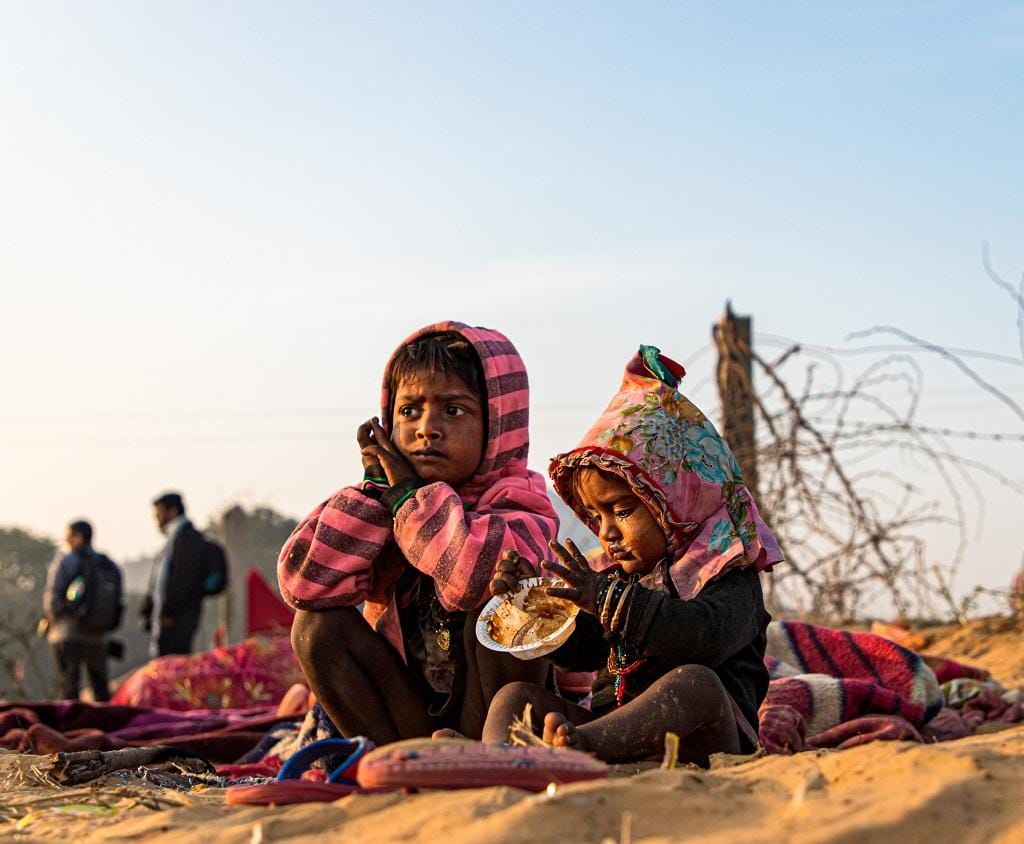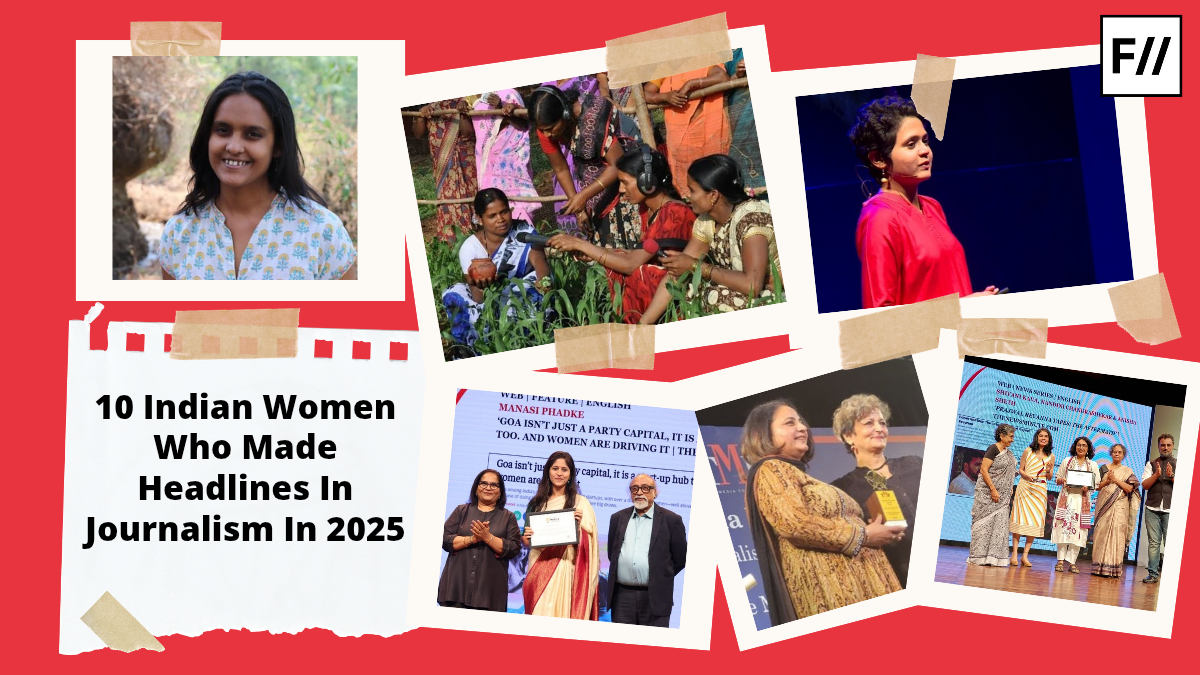The 19th edition of the Global Hunger Index (GHI) report published by Concern Worldwide and Welthungerhifle in 2024 sheds light on the alarming situation of food insecurity and malnutrition in India. As per the 2024 report, India has been placed under the ‘serious,’ category after being ranked 105 out of a total of 127 countries. With a score of 27.3, India is placed alongside Pakistan and Afghanistan and is positioned below its neighbouring countries Nepal, Sri Lanka, Bangladesh, and Myanmar falling under the ‘moderate,’ category.
There has been a consistent decline in India’s position in the GHI report over the last few years as the country ranked 111 and 107 with scores of 28.7 and 29.1 in the years 2023 and 2022 respectively. While lower scores are considered to be a step towards improvement, the constant decline in the rank makes it empirical for us to acknowledge the rising crisis of food insecurity in the country and understand why the country is failing to provide adequate food and nutrition to its citizens, especially women and children.
The GHI 2024 report shows a direct connection between hunger, climate change, and gender inequality by stating that, “Discriminatory norms and gender-based violence often place women and sexual and gender minorities at a heightened risk of food and nutrition insecurity and climate change impacts.” Since the policies that become susceptible to major reforms during a time of crisis are the policies made to improve the conditions of women and children in the country, they become more prone to the negative impacts of and suffer the burden of any crisis more.
Removal of eggs from mid-day meals in schools
India has a prevailing undernourishment rate of 13.7 per cent along with a child stunting rate of 35.5 per cent and the highest child-wasting rate of 18.7 per cent. These statistics reflect the country’s undernourishment crisis and shed light on the systematic failure of the Indian Government to fulfil basic human needs of food and nutrition of its citizens, especially children.

Despite several challenges surrounding child malnutrition and the 2024 GHI report suggesting that India ranks as the seventh most populous country with undernourishment, there are only one-third of states in the country that include eggs as a part of the mid-day school meal menu. The majority of the states such as Gujarat, Punjab, Haryana, Rajasthan, and Maharashtra, that are ruled by the Bharatiya Janata Party (BJP) or its coalitions are dominated by Brahmanical inclinations and hence, have prohibited serving of eggs in the mid-day meals which results in stunting of the children’s growth.
“If eggs are served, there is a possibility that a child from a pure vegetarian family may eat them unknowingly and damage his family tradition and hurt its religious sentiments,” says Acharya Tushar Bhosle from BJP’s spiritual cell. This statement made by a person affiliated with the BJP shows that the government is keen on safeguarding the religious sentiments of vegetarians hailing from the Hindu religion rather than combating crises of malnutrition and health problems like anaemia.
Since the BJP is holding power at the Central level as well, a position paper drafted under the divisive National Education Policy (NEP) recommends removing meat and eggs from the mid-day meals in schools. The experts who have contributed to the position paper have justified the suggestion by making vague statements such as, “For the small body frame of Indians, any extra energy provided through cholesterol by regular consumption of eggs and meat will lead to lifestyle disorders.”
Eggs serve as a major source of protein and all vitamins, apart from Vitamin C, for children receiving mid-day meals in school. The children who receive mid-day meals in school hail from economically weaker backgrounds and their parents are not able to afford a healthy diet for their children due to stagnant wages, inflation, and rising economic distress, especially in rural parts of the country. All these factors make the parents rely upon mid-day meals for their children to get adequate nutrients and since eggs are a major source of protein and vitamins, apart from Vitamin C, its removal will negatively impact the children and the malnutrition rate of the country.
Stunting in children is caused primarily cause due to deficiency of protein. However, apart from this, children in India suffer from multi-nutrient deficiency and malnutrition which can not be cured by replacing eggs with bananas or chikki in mid-day meals provided to children in schools. Due to multi-deficiency, children become much more prone to falling sick and developing respiratory health problems or diarrheal diseases, which leads to a drop in their academic performance and decreased enrolment in schools.
Caste, religion, and child malnutrition in India
The removal of eggs from the mid-day school meals in the states ruled by the BJP is a result of intertwining religion with politics. However, in addition to religion, casteism has also contributed to the deteriorating child nourishment in India. The mid-day school meal scheme, also known as Pradhan Mantri Poshan Shakti Nirman (PM POSHAN), was implemented by the Supreme Court of India all across the country in 2002 to provide children from economically weak and marginalised backgrounds at least one nutritional meal in a day when they come to school.

However, there are multiple cases in states like Rajasthan, Bihar, Uttar Pradesh, Andhra Pradesh, and Tamil Nadu where students have reported that their families have prohibited them from eating breakfasts or mid-day meals cooked by Dalit women and chefs in the school kitchens.
The reinforcement of erstwhile untouchability by not allowing Dalit students to touch food by labelling them as impure, not allowing Dalit chefs to cook food for the children and taking away their employment and source of income shows that religion and caste play a significant role in determining the health and nourishment levels of the country.
In addition to prohibiting students from eating meals cooked by people from the lowered castes, there are also reports of separating serving plates for students by marking their caste initials on them and not allowing students from different castes to eat together. The reinforcement of erstwhile untouchability by not allowing Dalit students to touch food by labelling them as impure, not allowing Dalit chefs to cook food for the children and taking away their employment and source of income shows that religion and caste play a significant role in determining the health and nourishment levels of the country.
Despite being one of the fastest-growing economies in the Financial Year of 2024 with an estimated GDP of $4 trillion, India’s per capita income was less than a fourth of the global average, proving the existence of income inequality. The income inequality significantly impacts the economically weaker section by increasing the pay gap and when clubbed with food inflation which has more than doubled over the last two years, it is evident that the country lacks a safety net system and is in constant denial of the undergoing crisis.
The food security crisis impacts the economically weak and the marginalised much more due to the role religion and caste play in defining the actions of people in the country, irrespective of their age or gender. Therefore, while India is still distant from being placed under the ‘alarming,’ category of the GHI report and from being placed alongside war-torn countries like Gaza and Sudan, there is a dire need for the country to introspect its actions towards combating child malnutrition and food security crisis.
About the author(s)
Neha (She/They) is a neurodivergent queer writer who illustrates occasionally. A student of media and gender studies, Neha is critical of the patriarchal and heteronormative world around her and looks at it from the political lens of intersectionality. Although socially introverted, you can find Neha getting out of her shell and interacting with people, getting to know their experiences, and analyzing how the biased structure of the society impacts the marginalized.






So vegetarians have malnutrition. Please don’t spread such lies. The most balanced diet is vegetarian and most nutritious. However studies and experiences shoe meat eaters are prone to most type of Cancer, heart attack and paralysis,kidney problem due to formalin for storage of meat and fish , etc. like life style disease. Are you ready to publish merit of vegetarianism, so that poor people not get trapped in high spending for these diseases and hence debt trapped
Absurd ! The Hunger Index is not all inclusive and it is defective taking into only 5 criteria. Even if one believes these criteria, how they come to calculate it. These index features are subjective like calculating stunting in children under 5 yrs age.
India is a large country and statistics based on few sample are misleading.The calorie need in India is low compared to western country. So the same parameter can’t be applied to different demography and different country. Just Propaganda paid writing.